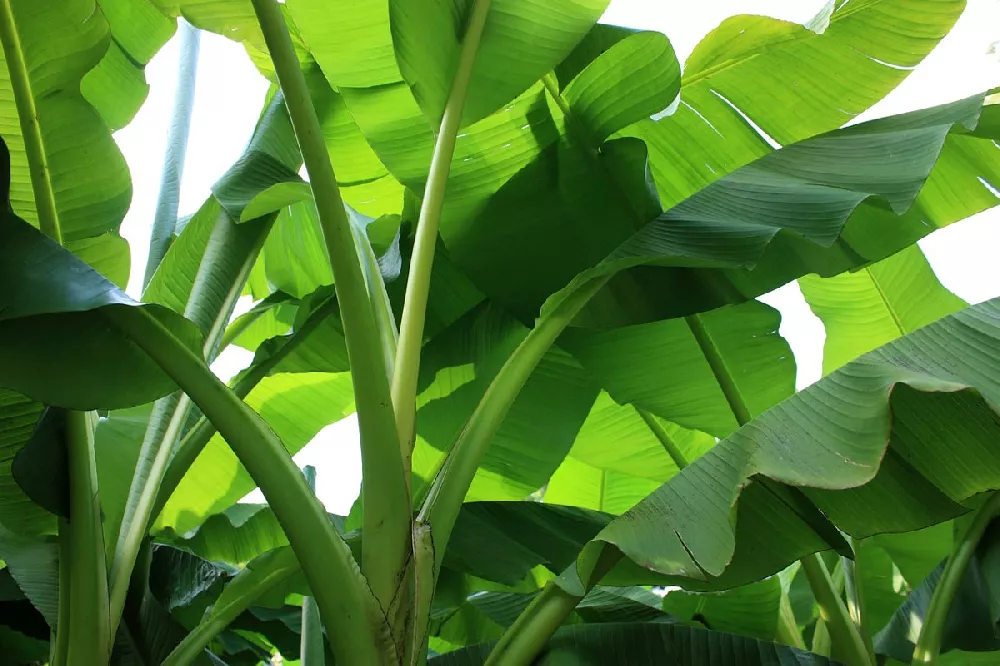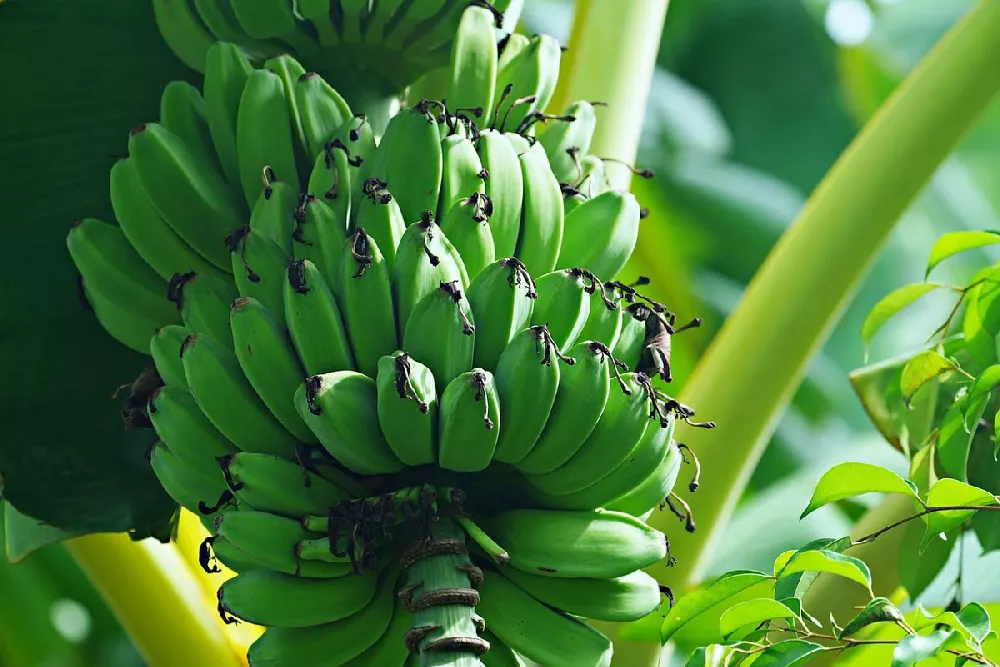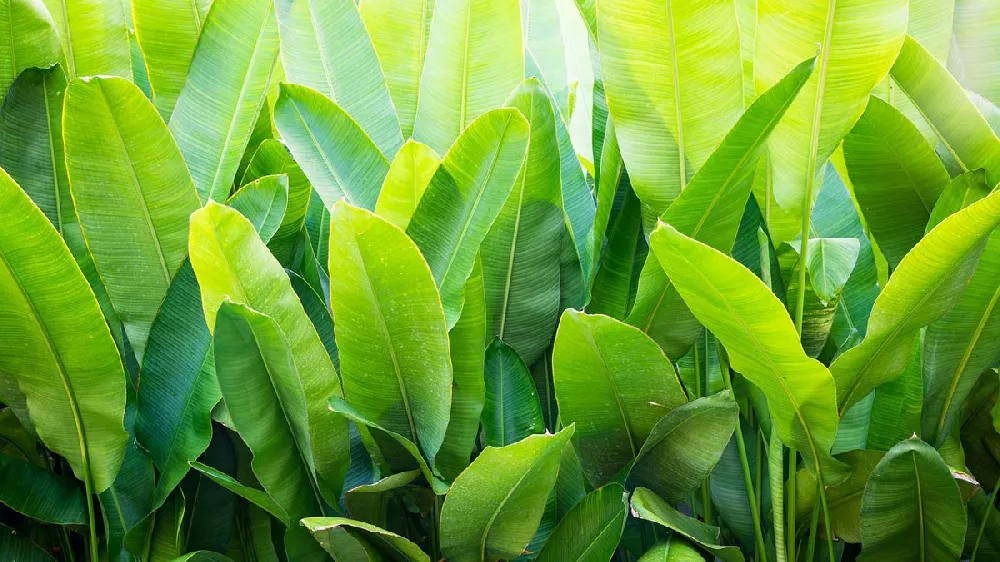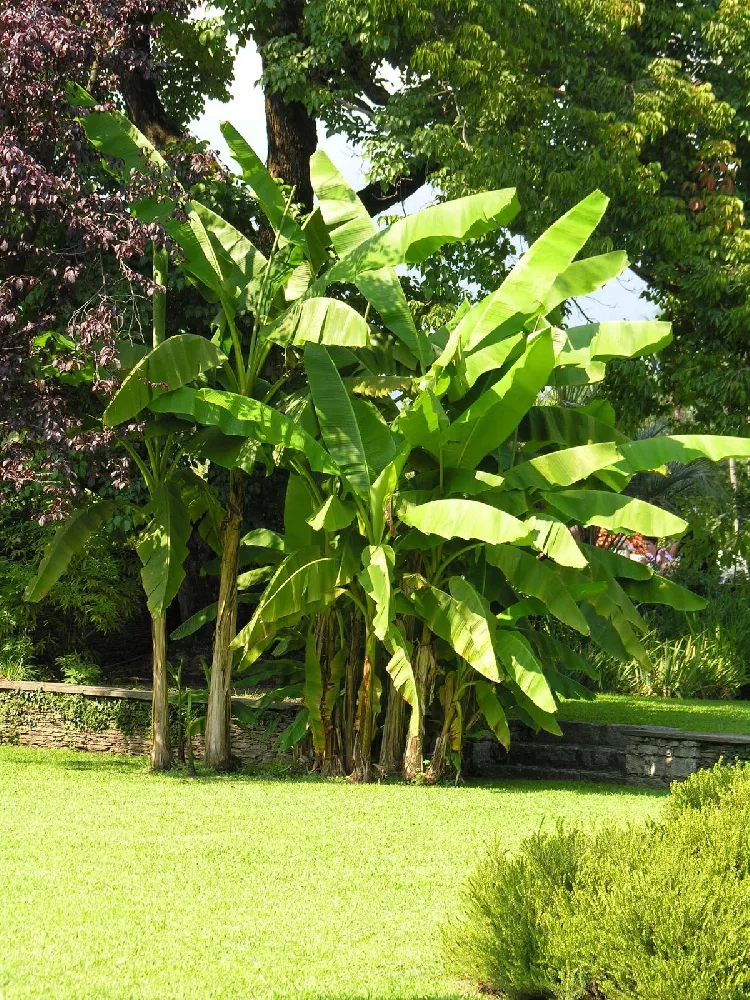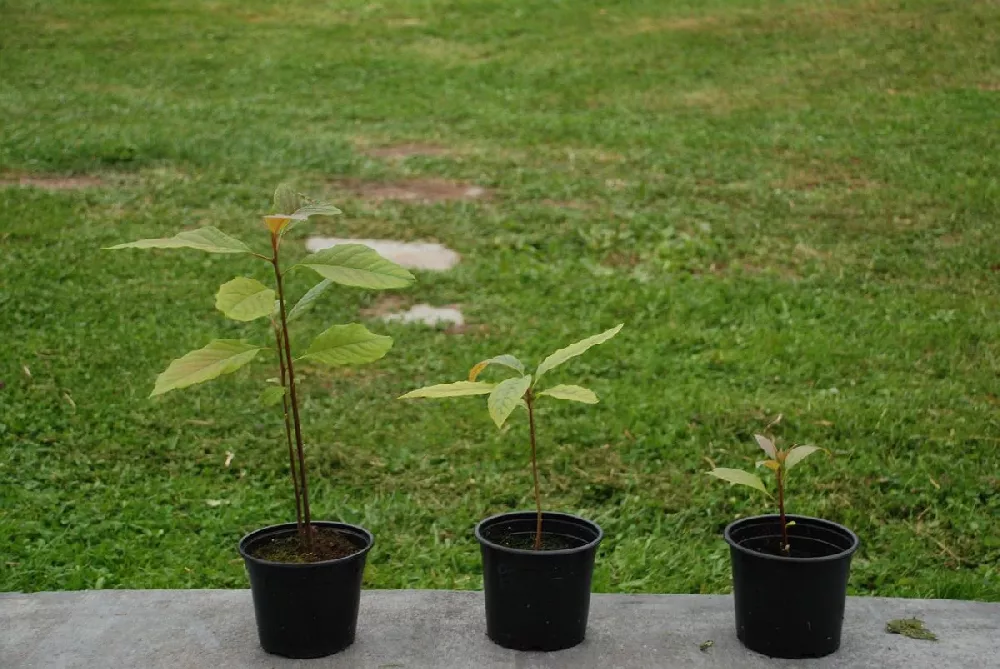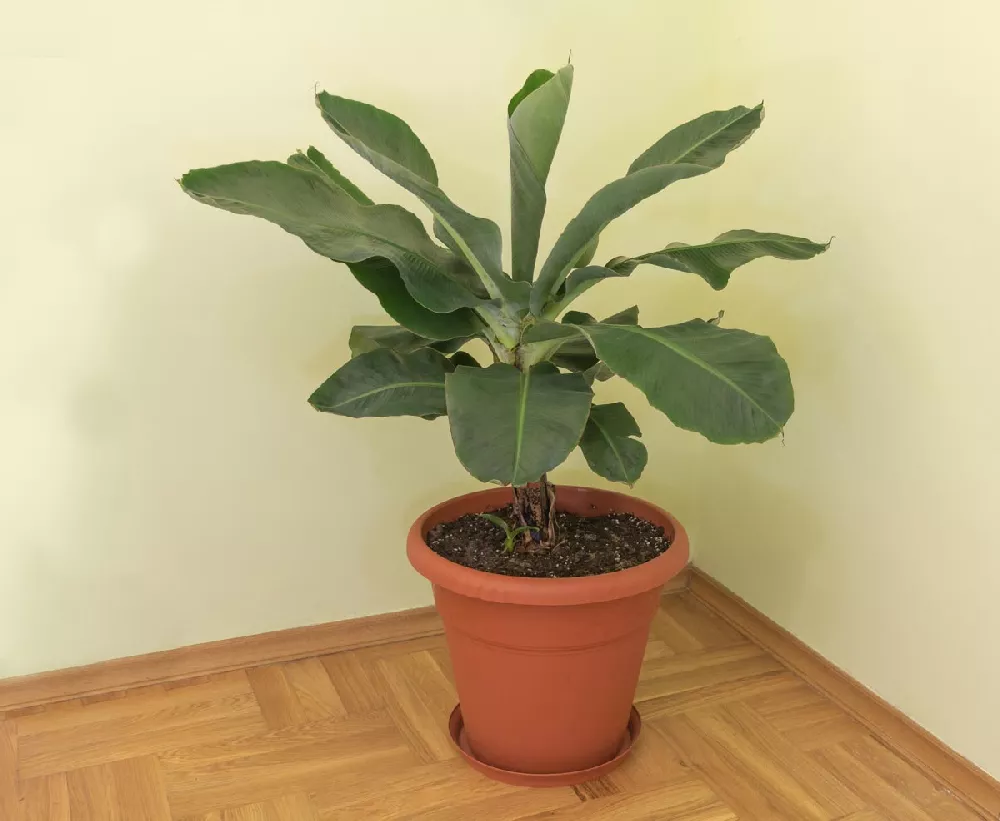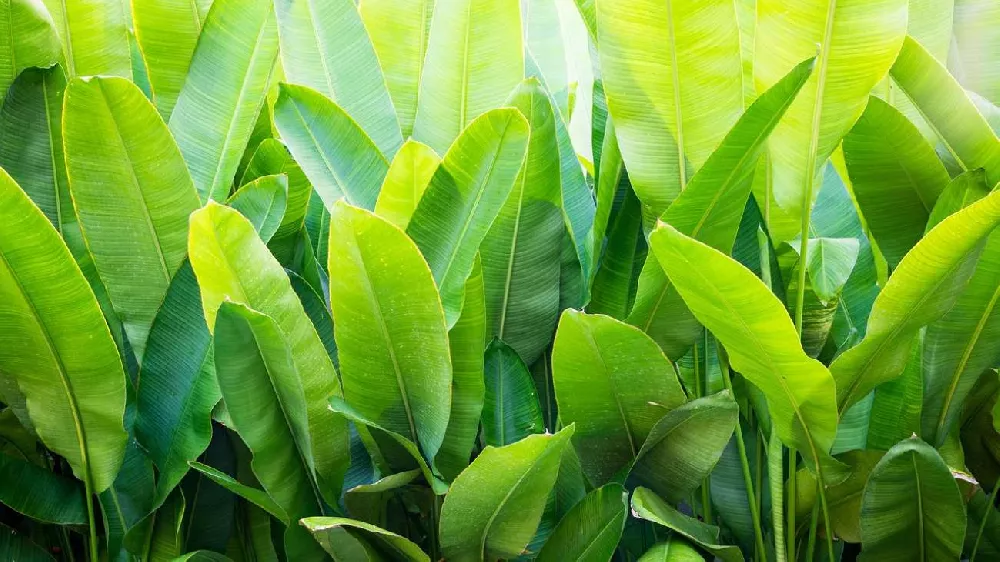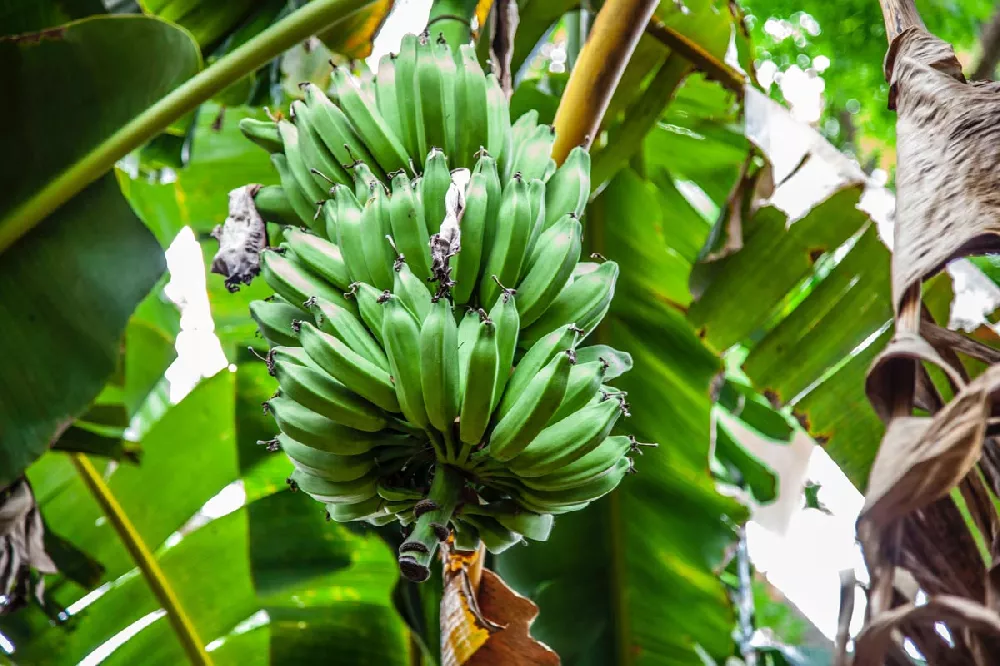- Home >
- Houseplants >
- Indoor Tropical Plants >
- Ice Cream Banana Tree
Ice Cream Banana Tree for Sale - Buying & Growing Guide
- Ships in 1-2 days
- 1-Year Warranty Eligible
- Pots or accessories are not included unless specified in the product options.
Shipping Details:
Once your order is shipped, you’ll receive an email with a tracking number and estimated delivery date. Most orders ship immediately, but some items are seasonal and may only ship in spring or fall. These products are noted on the website.
Two sweet treats — bananas and ice cream — come together in the ice cream banana tree, also known as Blue Java Banana or, to give it its official name, Musa acuminata x balbisiana 'Blue Java'. The fruit of this attractive plant has a smooth and creamy texture and tastes, according to those who own one, like vanilla custard ice cream. Also known as the Blue Java Banana because the unripe fruit is a bluish-green in color, the plants have large leaves and grow up to 15 feet tall. Individual leaves can be as long as a yard or more, and before it fruits, the tree has red blossoms. This tropical plant grows well in southern regions, but will happily thrive in a container in the north, to be brought inside during winter. Here are a few more reasons to plant an ice cream banana tree:
- Its vertical form makes it especially appealing as a houseplant that can fit near a window or in a corner.
- The tree grows fast, providing a harvest more quickly than most fruit trees.
- It is cold-hardy down to 20 degrees Fahrenheit.
Plant Care
Sunlight

Ice cream banana trees need full sun — at least six hours a day of direct sunlight.
Watering
Water whenever the soil 2 inches below the surface is dry; water more frequently in hot weather.
Fertilizing

Give your ice cream banana tree light applications of a balanced, slow release product designed for tropical plants.
Planting and Care
Planting instructions
Site your ice cream banana tree in a spot where it will get at least six hours of sun but is shielded from prevailing winds. If you are in the southern reaches of its range, some afternoon shade is acceptable, especially during very hot weather. Dig a hole that’s twice as wide as the plant’s root ball and just as deep. Unpot the plant and tease out any encircling roots, which may girdle the tree and slowly kill it. Place the tree in the hole, and, while holding it upright, begin to fill in around it with good-quality soil. Tamp down as you go to eliminate air pockets. When finished, water thoroughly. Place a 2- to 3-inch layer of an organic mulch, such as bark chips, around the root zone to conserve moisture, but be careful that it does not touch the trunk.
Watering and nutrients
Banana trees like their roots to be kept moist, but not soaking. When first planted, water several times a week, and do the same when you’re experiencing very hot weather. In the winter, you can taper back on watering to once every few weeks. Check the soil 2 inches down from the surface — if it is dry, then water the tree. During the growing season, give the tree light applications of a balanced fertilizer that’s formulated for tropical trees once a month. In winter, you can cut back on fertilizing while the tree is dormant.
Pollination
Ice cream banana trees are monoecious — that is, you may harvest fruit from it even if you only have one tree, because male and female plant parts are on the same tree. However, as is true of many monoecious trees, you may increase the size of your harvest if you have more than one in proximity to each other.
Pruning
Ice cream banana trees have a single central stalk that should only be pruned after the tree produces fruit. At that time, trim it back to about a yard tall. Allow the trunk to dry out for a few weeks, and then remove it. A new stalk will grow from the roots. You may also prune off individual leaves as they become dried and brown, and any suckers that grow from the base. You may also remove leaves that appear damaged or diseased at any time.
Pests and diseases
Pests that might bother your ice cream banana tree include banana aphids, spider mites, thrips, and mealybugs. A healthy tree shouldn’t experience significant damage from any of these, but if the infestation is severe, use neem oil for aphids and mites, insecticidal soap for mealybugs, and pyrethrin for thrips, which can do the most damage. Diseases of the banana tree include banana wilt, caused by a fungal pathogen called fusarium oxysporum. There is no cure for this disease, and your best plan is to destroy the tree and, if you replace it, plant it in a different spot.
Harvesting
Ice cream bananas are ripe when the fruit loses its blue-green tint and turns the familiar banana yellow in color. The bananas ripen in a large cluster on the tree, and usually the fruit at the top will ripen first. It’s easiest to harvest the whole cluster at once, although it’s best to have two people on hand because a full bunch of bananas can be heavy. Once you’ve harvested the cluster, you can cut the individual bananas off of the main stem. If some of them are not yet ripe, they will continue to ripen after being picked, so store them in a cool place and you will be able to enjoy them days after harvesting.
Achieving maximum results
Ice cream banana trees are a tropical plant, and they grow best in southern areas of the U.S. They are, however, adaptable plants that may be grown in containers for those in the northern states. In fact, they are an attractive addition to any room that contains a sunny window, and, since they are constrained in a pot, shouldn’t get too big for the average room. To grow in a container, follow our directions above, using a pot that is about twice as big as the plant’s root ball and sterile potting mix. You will probably need to water your banana tree more often when inside. It’s also a good idea to wipe down the leaves regularly with a damp cloth to get rid of dust accumulations, which can interfere with the tree’s ability to get enough sunlight.
FAQs
How fast do ice cream banana trees grow?
Ice cream banana trees are fairly fast-growing, putting on 12 to 15 feet of growth in a single year. You should get your first light harvest after two growing seasons. The trees themselves, however, are not long-lived — you can expect to get about 10 years of harvest time from a single tree.
How do I eat ice cream banana fruits?
Ice cream bananas are not that different from any other banana. So you may enjoy their sweet flavor raw, as part of a fruit salad, or use your bananas in cooking. Ice cream bananas lend a lovely flavor and texture to banana bread, for example. With their sweet taste, they are suitable in any dessert that calls for bananas — including banana splits.
Will my container-grown ice cream banana tree give me fruit?
That depends on the growing conditions. If it's in a big enough pot to attain a good height and is kept well-watered and fertilized properly, you may get a small harvest from a pot-grown banana tree. It is unlikely that you'll get the same sort of full, heavy cluster of bananas that you would if your tree was grown outside, however. Having said that, your ice cream banana tree can still be an arresting architectural element in any room in the house.
Compare Similar Products
Customer Reviews
 Too early to predict the fruits.
Too early to predict the fruits.Received a very healthy looking and a vibrant plant.
 Ice Cream Bananas
Ice Cream BananasI purchased this tree in June 2020 and I've had it 3 months. I love it ad it grows well. Looking forward to overwintering it and looking forward to bananas next year.
 banana tree
banana treegood growth good look
You can't add more Product Name - Product size to the cart.
OK